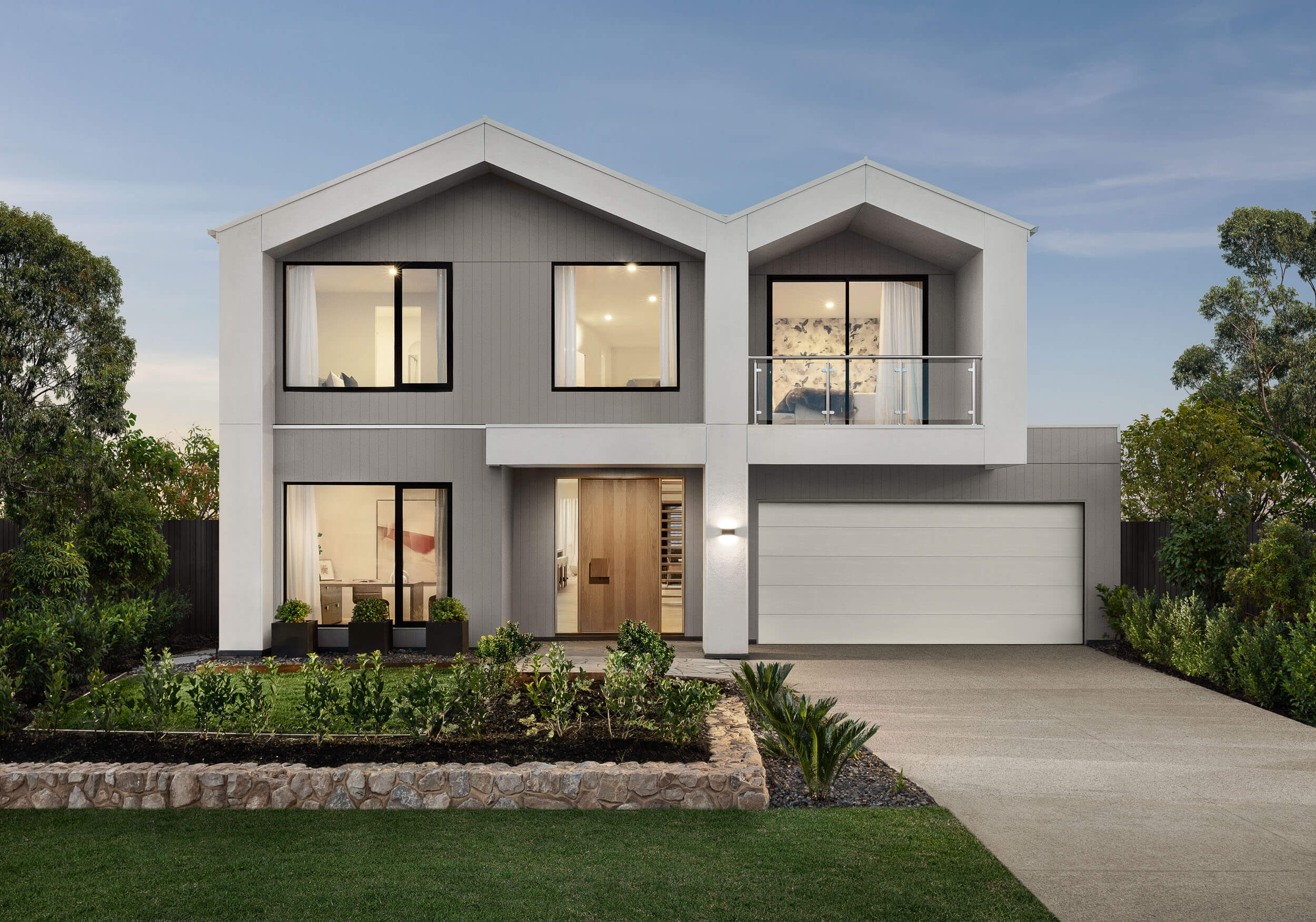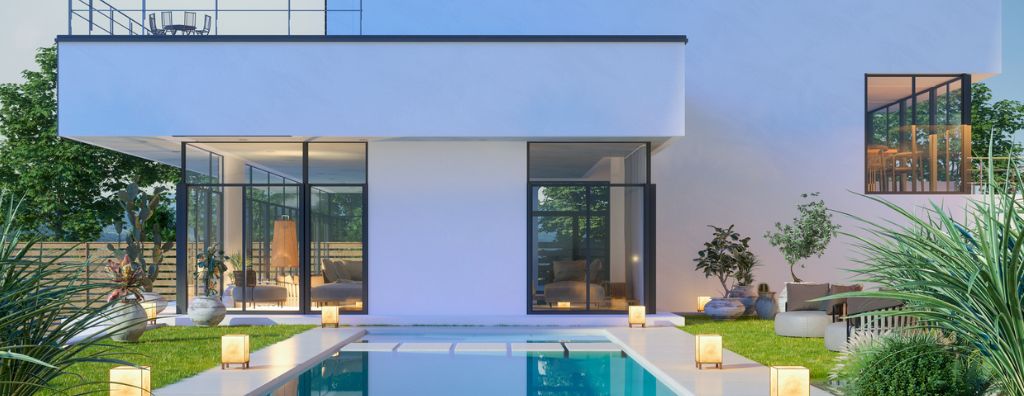Superior Services in Sustainable Residential Building for Long-Term Benefits
Wiki Article
Why Modern Home Architecture Is Necessary for Lasting Living Today
The combination of modern home style into sustainable living techniques is significantly identified as a pivotal element in attending to environmental difficulties. By leveraging ingenious products and energy-efficient layouts, modern homes not only decrease environmental footprints however likewise boost the top quality of life for their inhabitants.Innovative Products and Techniques
In the last few years, the integration of ingenious materials and strategies has transformed modern home architecture, with numerous engineers and builders welcoming lasting techniques. The application of materials such as bamboo, reclaimed timber, and recycled metal not only minimizes environmental influence but likewise enhances the visual allure of homes. Bamboo, for instance, is a quickly renewable energy that uses phenomenal toughness and adaptability, making it a suitable choice for structural components and surfaces.Additionally, advanced construction strategies, such as modular structure and 3D printing, have arised as substantial factors to sustainability. Modular building permits lowered waste and shorter building and construction times, while 3D printing allows accuracy in creating complex designs with minimal material use. These approaches not only streamline the structure process however also reduced the carbon footprint connected with conventional construction practices.
Moreover, the use of cutting-edge insulation materials, such as aerogels and phase-change products, improves thermal efficiency, enabling homes to keep comfortable temperatures with much less power consumption. As designers remain to explore and carry out these brand-new materials and strategies, the capacity for developing sustainable living atmospheres comes to be progressively feasible, inevitably bring about a more accountable method to home design.
Power Effectiveness in Layout
Several home owners are progressively focusing on power performance in their building styles, recognizing its necessary duty in decreasing energy prices and minimizing environmental impact. Effective energy-efficient style begins with the positioning and design of a home, making best use of natural light and ventilation. This can considerably decrease dependency on fabricated lighting and mechanical home heating or cooling down systems.
The option of high-performance insulation materials and energy-efficient windows plays an essential role in maintaining a comfy interior environment, decreasing warmth loss in winter months and keeping interiors cool throughout summer season. melbourne home residential projects. Moreover, including passive solar layout principles can harness sunlight for home heating, thereby decreasing the need for standard power resources.
Lasting building techniques also include making use of energy-efficient appliances and components, which contribute to decrease energy intake over the life-span of the home. By integrating lasting methods right into the style phase, designers can create homes that not only fulfill visual choices however likewise adhere to stringent energy efficiency requirements.

Assimilation of Smart Technology
The assimilation of smart technology into contemporary home design stands for a transformative approach to enhancing both benefit and sustainability. By integrating smart systems and devices, property owners can enhance energy usage, enhance day-to-day jobs, and boost total lifestyle. Smart thermostats, for example, permit precise temperature control, adjusting to citizens' schedules and choices, which significantly minimizes power waste.Moreover, clever illumination systems can be configured to change based on all-natural light accessibility, making certain that power is utilized effectively throughout the day. These systems not just decrease electricity intake yet likewise expand the lifespan of lights components - melbourne home residential projects. Furthermore, smart home appliances add to sustainability by offering real-time information on power usage, enabling house owners to make informed choices regarding their consumption habits
Home automation systems promote seamless assimilation of numerous technologies, allowing control from a solitary interface. This interconnectedness extends to protection systems, water administration, and climate controls, developing an alternative approach to lasting living. Eventually, the consolidation of smart innovation right into contemporary design not only improves functionality however additionally lines up with the more comprehensive goals of ecological stewardship, making homes much more resistant and adaptable in an ever-evolving globe.
Impact on Urban Preparation
Smart technology not only enhances specific homes but likewise dramatically influences urban preparation, improving how cities are created and function. The combination of clever systems in modern design permits for more reliable source monitoring, which is important in city settings where space and resources are limited.Cities progressively utilize data analytics and IoT (Web of Points) tools to maximize web traffic circulation, power consumption, and civil services. Smart grids can handle electrical power use in actual time, lowering both costs and exhausts. By focusing on lasting techniques, urban coordinators can develop resistant facilities that adjust to environmental modifications and populace growth.
Furthermore, modern home architecture encourages mixed-use developments that promote walkability and lower dependence on autos, additionally reducing city carbon footprints (melbourne home residential projects). Public areas are created with sustainability in mind, incorporating environment-friendly roof coverings, metropolitan yards, and absorptive sidewalks that enhance biodiversity and take care of stormwater properly
Enhancing High Quality of Life
Integrating sustainable design concepts right into modern home architecture significantly improves lifestyle for residents. By prioritizing energy performance, all-natural light, and sustainable products, these homes develop environments that foster well-being and comfort. Thoughtful style components, such as open floor plans and huge windows, not just decrease energy usage yet also promote mental wellness via boosted direct exposure to all-natural light and exterior sights.
Furthermore, modern-day lasting homes often integrate eco-friendly rooms, such as gardens or green roofing systems, which contribute to enhanced air top quality and supply homeowners with opportunities for leisure and recreation. These areas urge a connection with nature, improving overall mood and decreasing tension levels.
In addition, the use of sustainable materials can minimize ecological influence, causing much healthier indoor atmospheres by decreasing hazardous chemicals. This emphasis on health extends past specific homes to communities, as neighborhoods made with sustainability in mind often consist of walkable locations, promoting physical activity and social communication amongst locals.

Final Thought
In conclusion, modern-day home architecture plays an important role in advertising sustainable living with the consolidation of ingenious products, energy-efficient designs, and clever innovations. This method not only addresses instant ecological concerns however also adds to the lasting well-being of neighborhoods. By melbourne home residential projects boosting metropolitan planning and focusing on the high quality of life, modern architectural methods create unified living rooms that align with ecological concepts, making sure a lasting future for generations to find.Report this wiki page